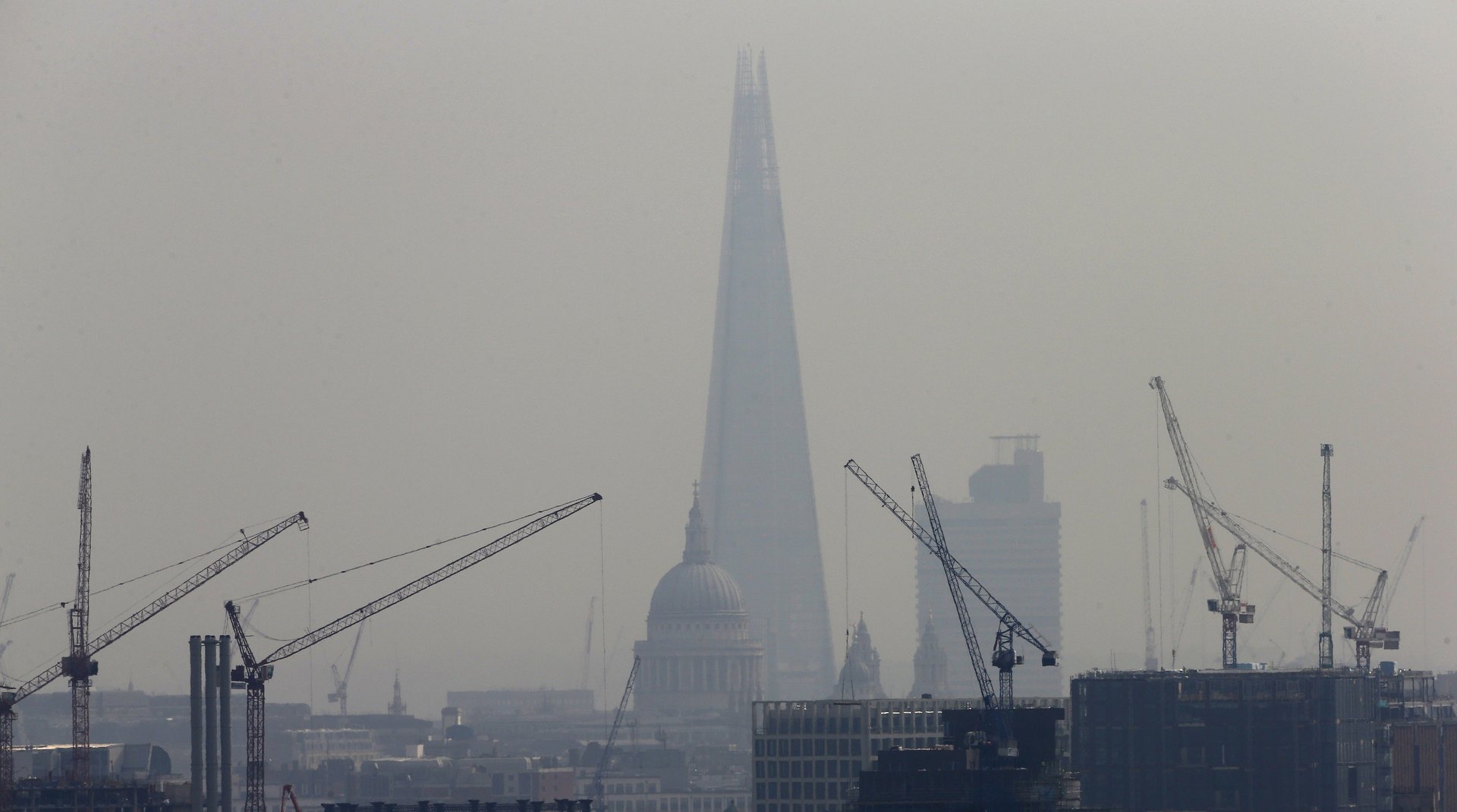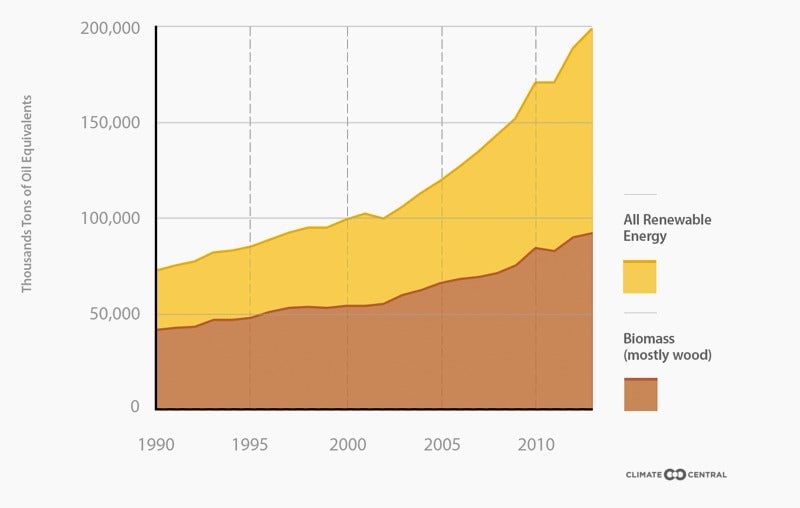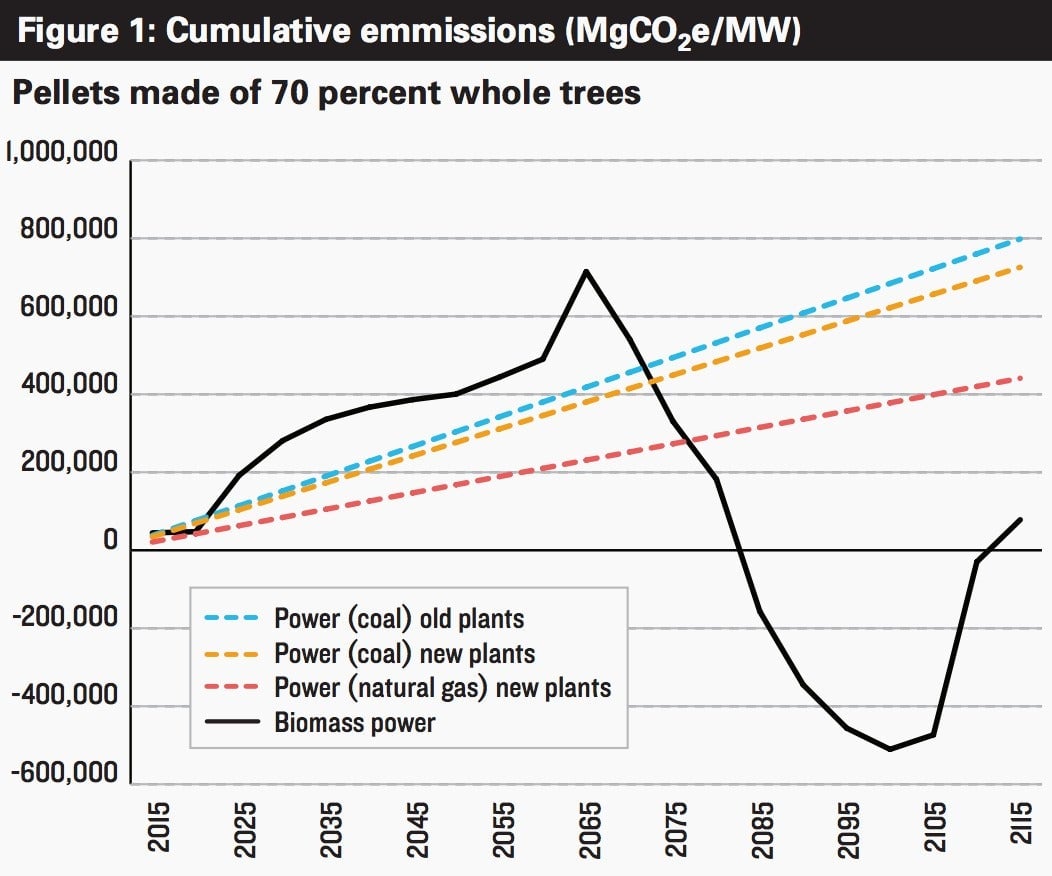The EU is emitting way more greenhouse gases than it says
One of the planet’s exemplars in preventing climate change, the European Union has instituted tough emissions rules and strong support for renewable energy. Yet this doesn’t necessarily mean more solar panels or wind turbines dotting Europe’s skyline. Nope, the EU’s biggest source of renewable energy is old-school: burning wood.


One of the planet’s exemplars in preventing climate change, the European Union has instituted tough emissions rules and strong support for renewable energy. Yet this doesn’t necessarily mean more solar panels or wind turbines dotting Europe’s skyline. Nope, the EU’s biggest source of renewable energy is old-school: burning wood.
There’s just one problem with this. Torching wood has the potential to warm the atmosphere faster than burning coal does.
So why does Europe get nearly half of its renewable energy that way? As Climate Central argues in this three-part piece, a legal loophole in the EU’s climate rules means it turns a blind eye to tens of millions of carbon dioxide (CO2) emissions that it pumps into the atmosphere each year. Worse, this policy means European governments issue hundreds of millions of dollars in incentives to encourage power plants to burn even more wood.
The core issue lies in how to count the CO2 pollution released when wood is burned for electricity and heat.
Because trees grow back, EU law deems wood a “renewable energy” just like solar or wind (a source of fuel, in other words, that can be used to meet its fairly tough climate action target of sourcing 20% of its final energy consumption to come from renewable energy by 2020).

But in many ways, wood is more like coal or oil—it must be burned to generate power. This process releases a lot of CO2, which traps heat in the atmosphere, warming the planet. But since trees also absorb CO2, they act as what’s been described as a “brake” on the rate of global warming. The logic of the EU rules holds that burning a tree doesn’t actually create new carbon emissions; it just releases the old. The carbon balance is therefore zero.
This makes complete sense—provided the wood you’re burning comes from already-dead wood that would release its carbon as it decomposed anyway. This includes dust and chips from sawmills, for example. And since the energy created when that wood is burned isn’t coming from fossil fuels, it’s ultimately a net positive for the atmosphere, as the CarbonBrief explains.
However, that equation changes once you start clear-cutting forests for the sole purpose of fueling power plants. Wood tends to emit more carbon than fossil fuels to generate the same amount of energy, according to the Natural Resources Defense Council (pdf). Eventually, trees grow back and absorb this carbon. However, a growing body of peer-reviewed research suggests it can take decades—or even centuries—before a forest grows back enough to balance out the atmospheric CO2 created when its trees were burned.
As you can see in this chart of the accumulated emissions from wood pellets made of whole trees, it will take half a century before new forest growth absorbs enough carbon from the atmosphere to push the net emissions below coal.

This flimsy interpretation of “renewable” allows European wood-burning power plants to receive tax breaks and subsidies, which total hundreds of millions of dollars a year, reports Climate Central.
And that brings us to the ultimate problem with the EU’s carbon accounting: Its incentives for switching from fossil fuels to ”renewables” has sparked demand for wood that has far outstripped the supply of the wood that can be swept up from mill floors. Or, for that matter, European trees. Forests in the US, Canada, Russia, Ukraine, and Belarus are increasingly being mowed down to feed Europe’s wood-hungry stoves.
The scientific arm of the EU’s environment commission—which calls the application of the rules a “bioenergy accounting error”—has warned of dire potential impact of these policies not just on the atmosphere, but also on food supply and ecosystems. Yet changes to the rules keep getting quashed by two of Europe’s more enthusiastic timber-growers, Sweden and Finland.
Of course, it’s not just Europe that has this problem; the UN’s climate change agency and other influential global bodies decline to account for the risks of wood energy. There might be a chance to change things at the Paris climate treaty meetings in December 2015, but unfortunately, closing the wood-burning loophole isn’t on the docket for debate.